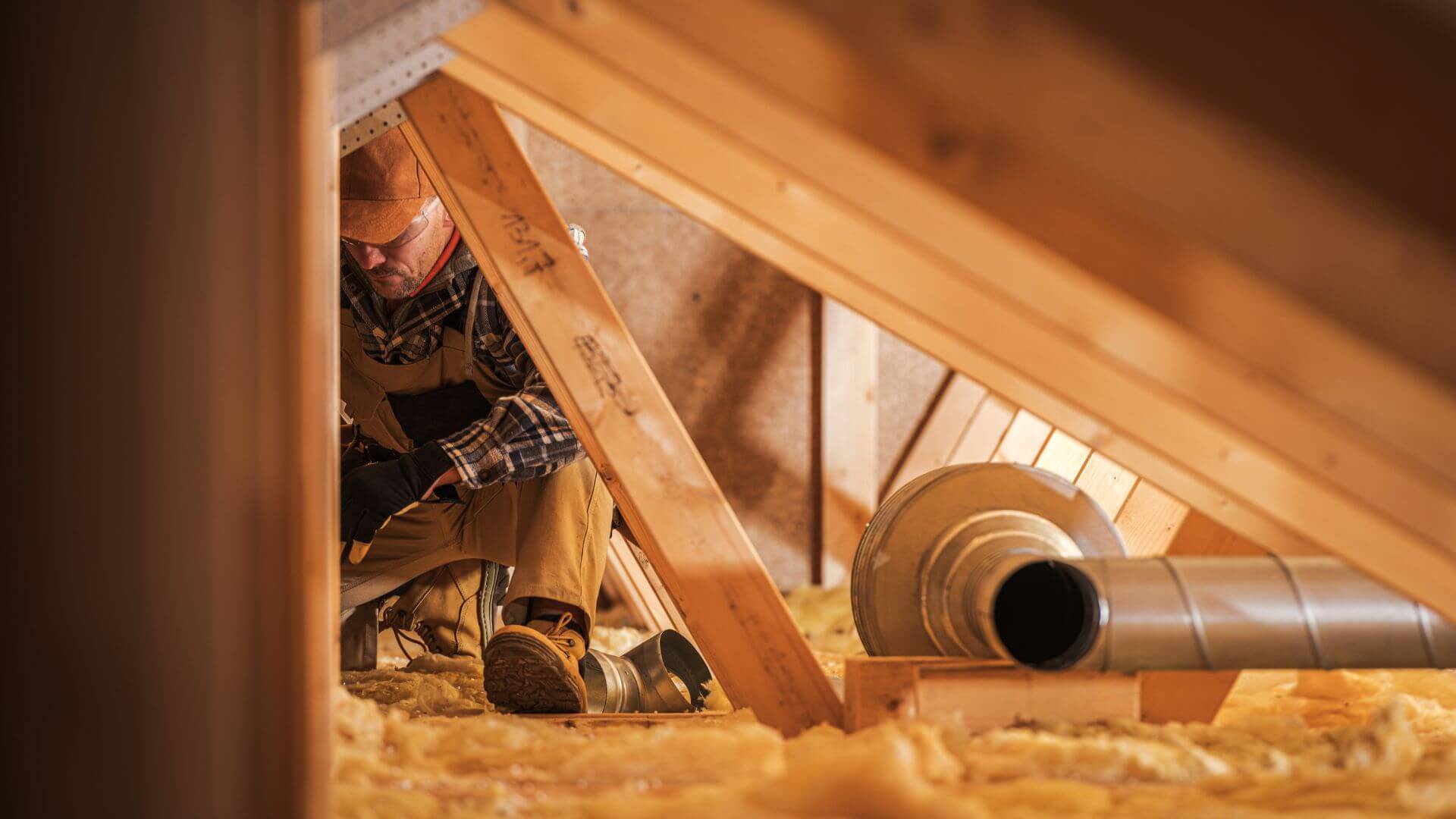
How Proper Attic Insulation Enhances Rodent Control Longevity
Rodent infestations can cause serious damage to your home and health. While trapping, exclusion, and sanitation are all critical components of any pest control strategy, one often overlooked factor is attic insulation. Proper attic insulation doesn’t just improve energy efficiency — it also plays a vital role in long-term rodent control. By investing in the right type of rodent-resistant insulation and understanding how it deters pests, homeowners can strengthen their defenses and enjoy a rodent-free home for years to come.
This article explores the connection between attic insulation and rodent control, why insulation upgrades matter, and how you can use insulation as an effective pest barrier in your attic.
The Link Between Attic Insulation and Rodent Control
Many homeowners don’t realize that the condition of their attic insulation can directly impact their vulnerability to rodents. Rodents like rats and mice prefer dark, warm, and undisturbed spaces for nesting — and your attic insulation provides all of that if not properly managed.
When insulation is old, damaged, or loosely installed, it can become a welcome mat for rodents. Once inside, they chew, burrow, and nest in the material, leaving behind droppings, urine, and bacteria. This not only destroys the insulation’s effectiveness but also creates a hazardous environment.
By contrast, proper attic insulation rodent control strategies use modern materials and techniques designed to resist nesting and make your attic inhospitable to unwanted pests. This preventive approach helps ensure your pest control efforts are sustainable, not just short-term fixes.
How Insulation Deters Rodents in the Attic
The primary way insulation deters rodents is by removing the comfort and nesting material they seek. Rodent-proof attic insulation is installed tightly and uniformly, leaving no hollow pockets for rodents to crawl through. Certain materials are also pest-resistant, making them less appealing or accessible to rats and mice.
Additionally, insulation helps seal up small gaps and holes where rodents might enter. When combined with proper air sealing and exclusion techniques, insulation becomes part of a larger rodent prevention system.
Some types of insulation for rodent proofing even contain natural deterrents or physical barriers that make it difficult for rodents to chew or tunnel through. This not only protects the insulation itself but also discourages rodents from making your attic their home.
Benefits of Rodent-Resistant Insulation for Pest Control
Upgrading your attic insulation for rodent resistance offers several lasting advantages for homeowners. First and foremost, it contributes to a cleaner and safer home environment. You’ll reduce the chance of rodent-borne disease transmission, foul odors, and allergen exposure.
Energy efficiency is another benefit. Rodents that damage insulation reduce its R-value, leading to higher heating and cooling costs. By installing rodent-resistant insulation, you restore your home’s thermal performance and potentially save on energy bills.
More importantly, proper insulation acts as a pest barrier, helping your rodent control treatments last longer. Even if traps and baits remove the initial infestation, insulation ensures they don’t return by eliminating the factors that made your attic inviting in the first place.
Choosing the Right Insulation for Rodent Prevention
Not all insulation is created equal when it comes to pest control. Traditional fiberglass batts, for example, are easily shredded by rodents for nesting material. On the other hand, pest-resistant insulation materials are specifically engineered to resist chewing and contamination.
Cellulose insulation treated with borate is a popular option because it is both fire-retardant and insect-repellent. It can also deter rodents when installed densely enough. However, it must be professionally installed to ensure proper coverage.
Spray foam insulation is another strong contender. Once cured, it forms a solid, seamless barrier that fills all the tiny cracks and gaps rodents use to enter. Spray foam is not a food source, and rodents typically find it difficult to burrow into. While not fully rodent-proof, it serves as a strong deterrent and is ideal for sealing entry points.
If you’re unsure which material is right for your home, working with a professional rodent control and insulation expert ensures that your attic receives the most effective solution tailored to your pest control needs.
Insulation Upgrades as a Rodent Control Investment
Upgrading attic insulation may seem like a home improvement project, but it’s also a strategic rodent control attic upgrade. Whether you’ve experienced a recent infestation or are looking to prevent one in the future, addressing insulation should be part of your long-term plan.
A comprehensive attic restoration typically includes:
- Removal of old or contaminated insulation.
- Deep cleaning and disinfection of rodent waste.
- Sealing of all entry points and air leaks.
- Installation of new insulation for rodent proofing.
These steps create a cleaner, sealed, and more energy-efficient space that actively resists rodents. When done correctly, this not only keeps pests out but also improves air quality and comfort inside the home.
Attic Rodent Prevention Tips That Work with Insulation
Proper insulation is most effective when combined with smart prevention habits. To maximize the longevity of your rodent control insulation, consider the following tips:
- Regularly Inspect the Attic
Check insulation for signs of tampering, droppings, or new nesting areas. Early detection helps you act quickly before rodents gain a foothold. - Seal Openings and Gaps
Use caulk, steel wool, or metal mesh to seal around vents, chimneys, plumbing, and wiring. Spray foam insulation can also be used for air sealing in tight spaces. - Keep the Perimeter Clean
Don’t attract rodents in the first place. Trim trees and bushes near the roofline, store food securely, and avoid clutter in storage areas. - Address Moisture Issues
Rodents are drawn to warm, damp environments. Ensure proper ventilation and repair any roof leaks that could compromise your insulation and attract pests. - Schedule Annual Attic Inspections
Routine inspections by rodent control professionals help catch problems early and ensure your insulation continues to perform as a pest barrier.
By maintaining your attic environment and investing in long-term rodent control insulation, you can significantly reduce the chances of future infestations.
Why Professional Help Is Essential for Rodent-Proof Insulation
While DIY insulation solutions may seem cost-effective, they often fall short in terms of thoroughness and pest prevention. Rodent control attic upgrades require specialized knowledge, especially when removing contaminated insulation and sealing entry points.
Professional pest control and insulation technicians not only ensure proper installation but also select the best insulation solutions for rodent infestations. They understand how insulation interacts with pest behavior and can recommend materials that enhance both energy efficiency and rodent resistance.
A licensed expert can also integrate insulation with other rodent control measures, such as exclusion and sanitation, to provide full-spectrum protection for your home.
Conclusion: Invest in Lasting Rodent Control with Proper Attic Insulation
Rodents are persistent, but so is the damage they cause. If you want to keep your attic — and your home — rodent-free, don’t overlook the role of insulation in your pest control strategy. The right insulation not only improves your home’s energy efficiency but also strengthens its defenses against future infestations.
By choosing rodent-resistant insulation and maintaining a well-sealed attic environment, you’re taking a proactive step toward long-term rodent prevention. Whether you’re recovering from an infestation or aiming to prevent one, upgrading your attic insulation is a smart, strategic investment.
Need Expert Help with Attic Insulation and Rodent Control?
Rodent Control Inc specializes in rodent-proofing solutions, including attic insulation removal, sanitation, and pest-resistant insulation installation. With our experience and industry-leading materials, we’ll help you protect your home from rodents — today and in the future.
Contact Rodent Control Inc today to schedule your attic inspection and learn how our insulation solutions can enhance the longevity of your rodent control plan.
